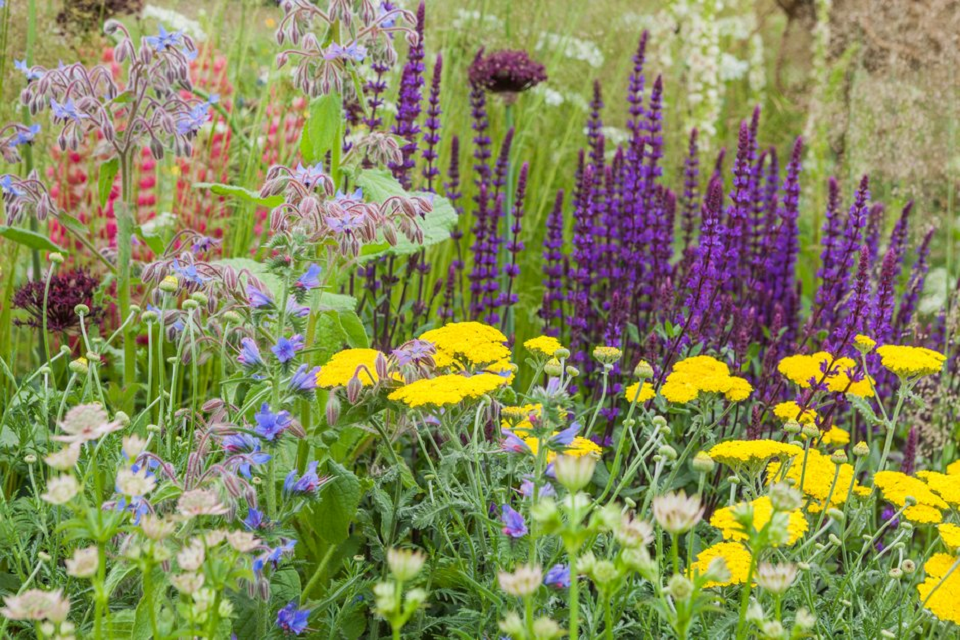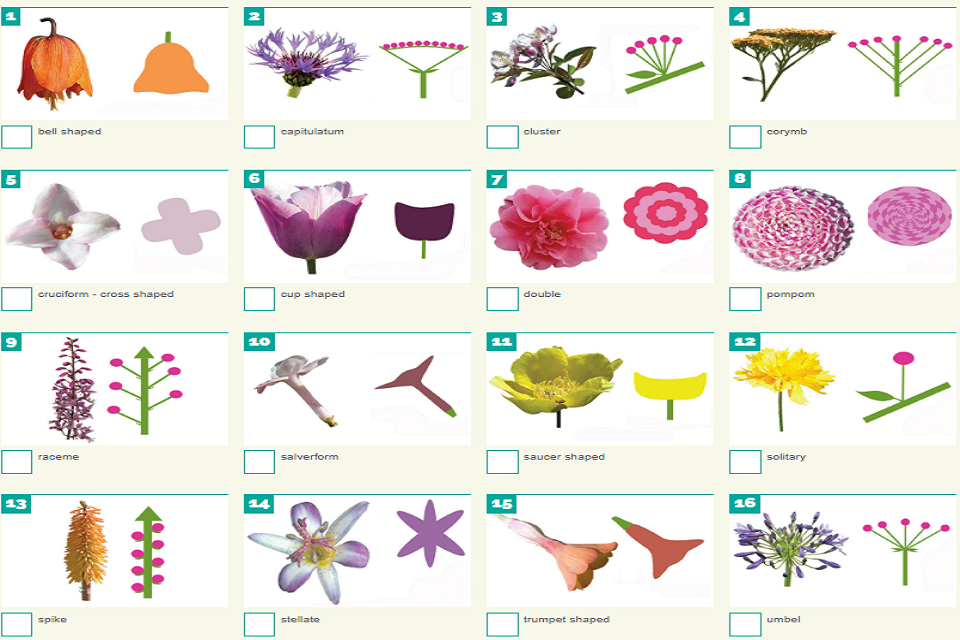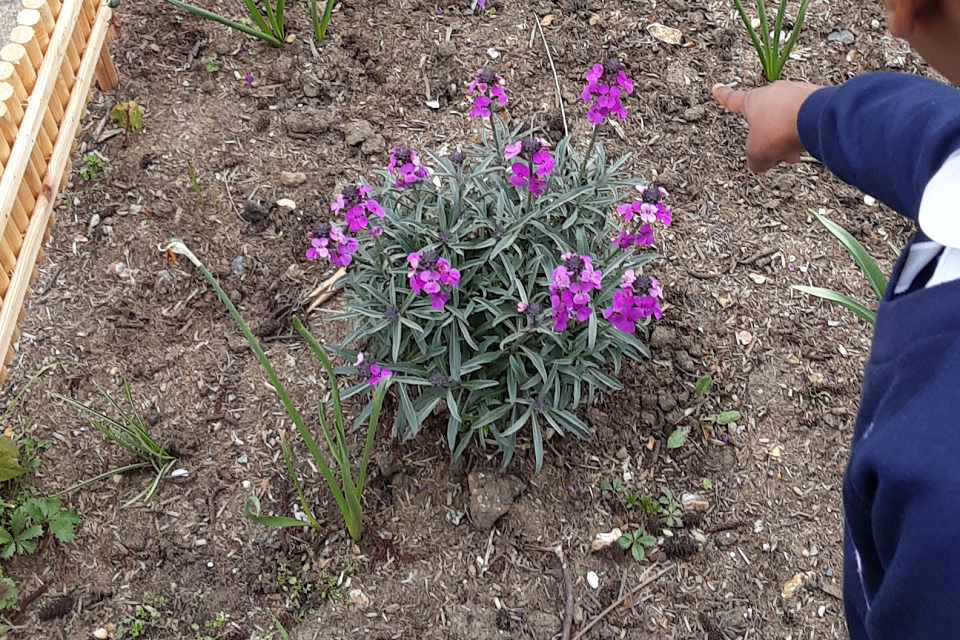Which flower shapes do bees prefer?
This month we find out what sort of flower shapes bees like best and why. Use our spotter guide to find out which flower shapes you have in your growing space.
03 May 2023

Explore the meaning behind the words in bold in our glossary at the bottom of this page.
Flowers come in many different shapes and sizes, so when a bee is looking for nectar, what sort of flowers are they making a beeline for?
Bees and their tongue lengths
Different types of bee have evolved to have different tongue lengths, this means that they are not all competing with each other to feed from the same flower shapes.

Image: Bumblebee feeding on a sunflower (Credit: RHS Andrew Halstead)
Long-tongued bees can feed from flowers shaped like tubes such as snapdragons, which have their flowers arranged in racemes (see flower spotter guide number 9 below) to reach their nectar reward.
Short-tongued bees, on the other hand, need their nectar to be easier to reach and prefer open flowers, like clover. Some short-tongued bees have learned to ‘steal’ nectar from tube-shaped flowers by nibbling a hole at the base of the flower and feeding from the outside. Have a look at the photo to see one in action.

Image: Bumblebee ‘stealing’ nectar by nibbling a hole in the bottom of the flower (Credit: RHS Tim Sandall)
Other bees have a medium-length tongue, for example the red-tailed bumblebee; this means that they are able to feed on lots of different flower shapes.
It can take time for bees to learn how to get to nectar from more complicated flower shapes, such as trumpet shaped flowers (see number 15 in the spotter guide below).
When you think about which plants to put in your growing space, it is a good idea to have lots of different flower shapes available, so that there is nectar available for different types of bees.
To learn about specialist bees which will only visit certain types of plants, have a look here.
Flower spotter guide

Use the spotter guide above to see which flower shapes are in your growing space. How many different types can you spot? Take photos of your flowers and tag us on Facebook, Instagram and Twitter.
Spotter guide
Quiz question
Can you work out from the spotter sheet which flowers are not as good for hungry bees looking for nectar? (Find the answer at the end of this article).
The Bee Garden at St George's Primary School
The pupils at St George’s Primary School, Camberwell, had a look around the Bee Garden at their school to see which flower shapes they could find. They spotted these beautiful flowers, which have a cruciform shape, see number 5 in the flower spotter guide above.

Image: Pupils at St George's Primary School went out to look at flower shapes in the Bee Garden (Credit: St Georges Primary School, Camberwell)
Glossary
|
Evolved
|
To have changed over time in order to be able to survive better.
|
|
Nectar
|
Sweet liquid produced in flowers.
|
|
Racemes
|
A group of flowers on a stem, where each flower is attached by a small stalk.
|
Find out more about bees
If you are just buzzing to find out more about bees, check out our monthly updates:
Learn more about pollinators:
September update
Find out more about pollen:
October update
What happens to bees in the colder months?
November update
How many types of bees are there in the UK?
December update
Discover how bees help put the food on your plate:
January update
Explore the lifecycle of a bumblee:
February update
What to sow to help bees in June:
March update
Find out about bee corridors:
April update
Answer to quiz question
The flower shapes which are not as good for hungry bees are: double (number 7) and pompom (number 8). This is because they have many layers of petals, making it difficult for bees to get past the petals to the nectar that they need.